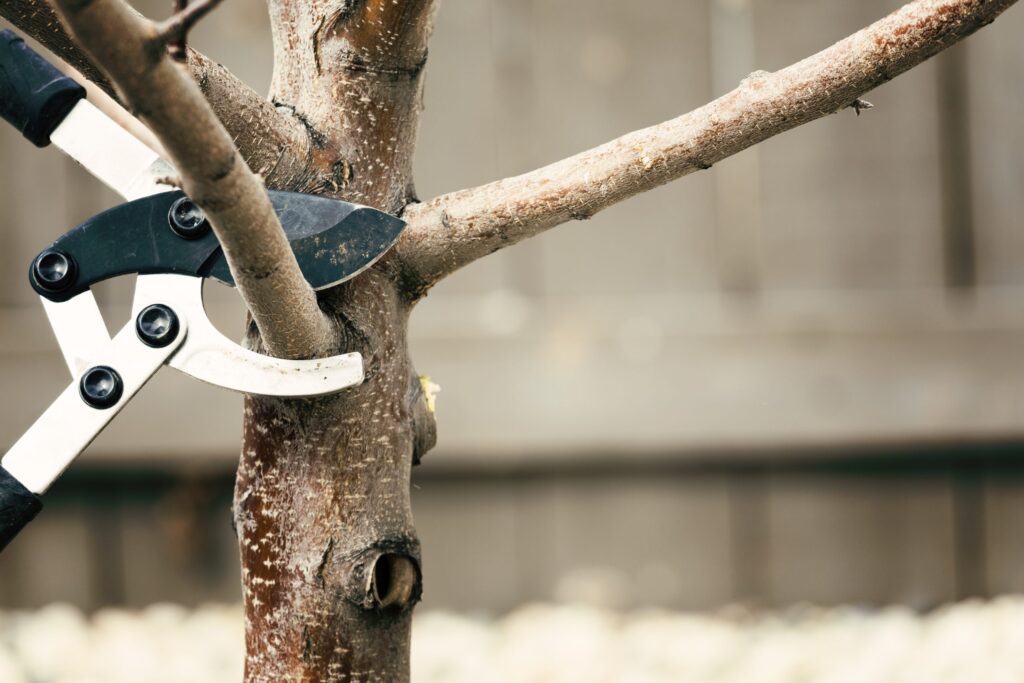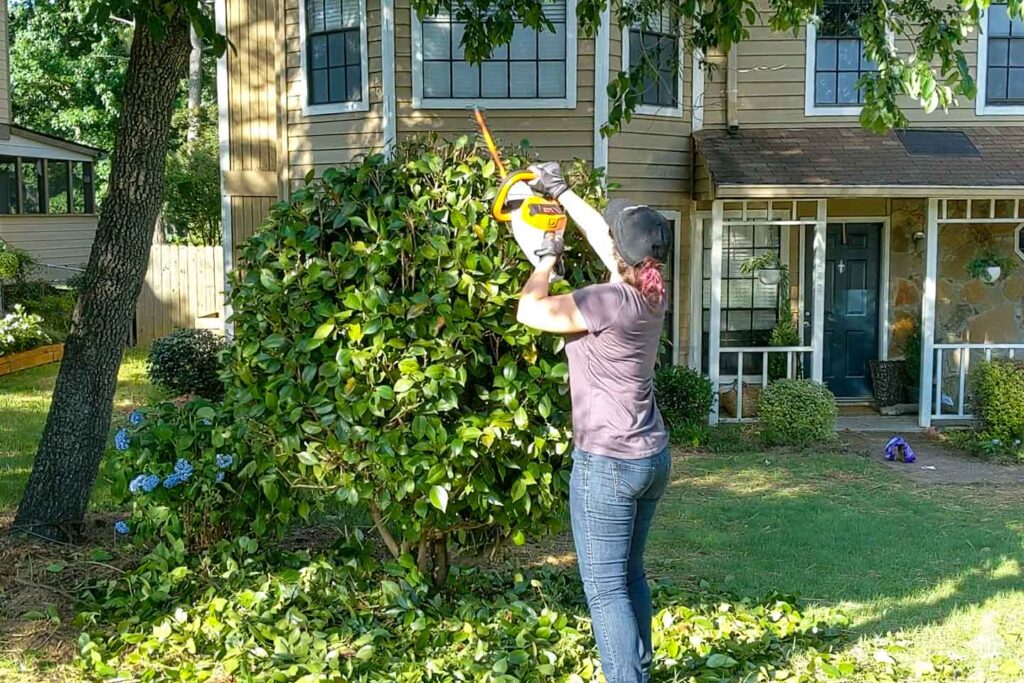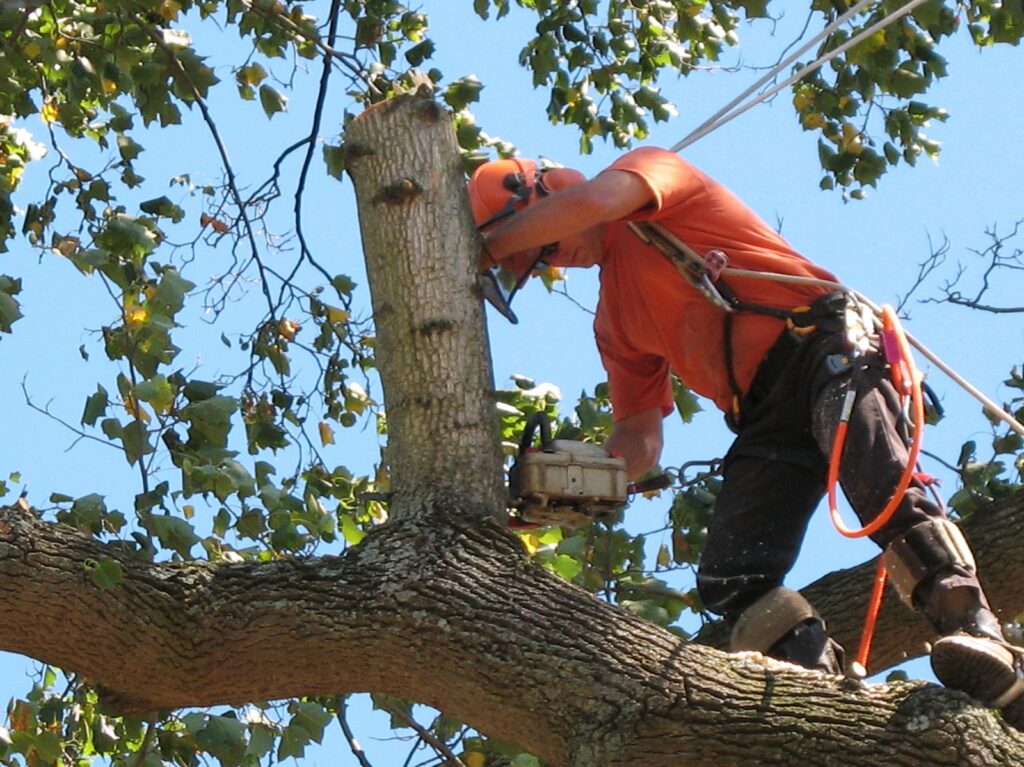Tree pruning is an essential aspect of maintaining the health and appearance of your trees. Understanding the importance of tree pruning and learning the proper techniques can help you ensure the longevity and vitality of your landscape. In this article, we will explore the benefits of regular tree pruning, the risks of neglecting pruning, the basic tools and equipment needed for effective pruning, the right timing for pruning, different pruning techniques, and a step-by-step guide to pruning your trees.
Understanding the Importance of Tree Pruning
Tree pruning is not just about enhancing the aesthetic appeal of your landscape; it plays a crucial role in the overall health of your trees. Pruning helps in removing dead, diseased, or damaged branches, allowing the tree to allocate its resources towards healthy growth. It also improves airflow and sunlight penetration, reducing the risk of fungal diseases. Additionally, proper pruning enhances the structural integrity of trees, minimizing the chance of branch failure during storms or high winds.
When it comes to tree pruning service, there are various techniques and considerations to keep in mind. One important aspect is the timing of pruning. Different tree species have different optimal pruning times, and understanding these timings can maximize the benefits of pruning. For example, pruning deciduous trees during their dormant season can stimulate vigorous growth in the spring. On the other hand, pruning certain flowering trees immediately after they bloom can help maintain their desired shape without sacrificing their floral display.
Another factor to consider is the size and age of the tree. Young trees require different pruning techniques compared to mature ones. For young trees, pruning focuses on shaping the tree’s structure and removing any competing branches. This helps establish a strong framework for future growth. In contrast, pruning mature trees involves selectively removing dead or hazardous branches while maintaining their overall form.
See Also: The Ultimate Guide to Tree Removal in Inner West

Benefits of Regular Tree Pruning
Regular tree pruning offers numerous benefits. First and foremost, it promotes the growth of new branches and leaves, ensuring the tree’s vitality. Pruning also helps in maintaining the desired size and shape of the tree, preventing it from growing too large and overpowering your landscape. Pruned trees are less prone to pests and diseases since the removal of diseased or dead branches reduces the risk of infestation. Moreover, pruning enhances the overall appearance of your trees, making your outdoor space more visually appealing.
Aside from the immediate benefits, regular tree pruning can have long-term positive effects on the health and longevity of your trees. By removing weak or crowded branches, pruning allows for better air circulation and sunlight exposure throughout the tree’s canopy. This not only reduces the risk of fungal infections but also promotes photosynthesis, the process by which trees convert sunlight into energy. As a result, well-pruned trees tend to be more resilient and better equipped to withstand environmental stressors such as drought or extreme temperatures.
Risks of Neglecting Tree Pruning
Failure to prune your trees can have detrimental effects on their health and safety. Without proper pruning, dead and diseased branches can continue to decay, spreading to other healthy parts of the tree. Overgrown branches can pose a safety hazard, especially during storms or high winds, potentially causing property damage or personal injury. Moreover, neglected pruning can result in poor tree structure, leading to weak branches and an unbalanced canopy that is more susceptible to breakage.
Furthermore, trees that are not regularly pruned may experience reduced fruit production or diminished flowering. This is because the tree’s energy is wasted on maintaining unnecessary branches instead of directing it towards reproductive processes. In the case of fruit trees, proper pruning can improve fruit quality and yield by ensuring adequate sunlight and airflow to the developing fruits.
It is important to note that tree pruning is not a one-time task but rather an ongoing process. Regular inspections and maintenance pruning are necessary to ensure the continued health and safety of your trees. Hiring a professional arborist can provide expert advice and assistance in determining the appropriate pruning techniques and schedules for your specific trees.
Basic Tree Pruning Tools and Equipment
Before you start pruning your trees, it is essential to gather the necessary tools and equipment. Safety should be your top priority when undertaking any pruning task.
Pruning trees not only helps maintain their health and appearance but also ensures the safety of your property and surroundings. By removing dead or diseased branches, you can prevent potential hazards such as falling limbs during storms or strong winds. Additionally, pruning promotes better air circulation and sunlight penetration, which are vital for the overall growth and development of your trees.
Safety Gear for Tree Pruning
When pruning trees, it is crucial to protect yourself from potential risks. Wear safety goggles to shield your eyes from falling debris and protective gloves to safeguard your hands from cuts and scratches. Use a hard hat to protect your head from falling branches and sturdy boots with good traction to prevent slips or falls while climbing trees. It is also advisable to have a first aid kit nearby in case of any accidents.
Furthermore, it is important to be aware of your surroundings before you begin pruning. Look out for power lines, nearby structures, or any other obstacles that may pose a risk during the pruning process. Taking these precautions will ensure a safe and successful pruning experience.

Essential Tools for Effective Pruning
To properly prune your trees, you will need a few essential tools. A pair of sharp pruning shears or secateurs is ideal for removing small branches or twigs. These handheld tools provide precision and control, allowing you to make clean cuts without damaging the surrounding bark.
For larger branches, use loppers or pruning saws, depending on the thickness of the branch. Loppers have long handles and sharp blades, making them suitable for cutting branches up to 2 inches in diameter. On the other hand, pruning saws have a curved or straight blade with coarse teeth, enabling you to tackle thicker branches with ease.
A pole pruner or pruning pole with a saw blade attachment can be helpful for reaching higher branches without the need for a ladder. This tool consists of a long pole that allows you to extend your reach and a saw blade at the end for efficient cutting. With a pole pruner, you can maintain the upper canopy of your trees without compromising your safety.
Lastly, a sturdy ladder or climbing harness is necessary for safe access to the higher portions of the tree. When using a ladder, make sure it is stable and placed on level ground. If you prefer a more secure option, a climbing harness with appropriate safety ropes and attachments can provide stability and prevent falls while working at heights.
Remember, using the right tools and equipment not only ensures your safety but also helps you achieve the desired results when pruning your trees. Take the time to familiarize yourself with each tool and its proper usage to make the pruning process efficient and effective.
Identifying the Right Time to Prune
Pruning at the right time is crucial for the health and growth of your trees. While some light pruning can be done throughout the year, there are certain guidelines you should follow to ensure optimal results.
Seasonal Guidelines for Tree Pruning
The best time to prune deciduous trees is during their dormant season, which typically occurs in late fall to early spring. Pruning during dormancy minimizes stress on the tree and allows it to heal more efficiently. However, avoid pruning during freezing temperatures or when there is a high risk of frost. On the other hand, evergreen trees can be pruned year-round, but it is best to do so in early spring before new growth begins.
Signs Your Tree Needs Pruning
Aside from following seasonal guidelines, there are specific signs that indicate your tree may require immediate pruning. These signs include dead or dying branches, branches rubbing against each other, crossed or crowded branches, or branches obstructing structures or power lines. If you notice any of these signs, it is crucial to address them promptly to prevent further damage or safety hazards.

Different Types of Tree Pruning Techniques
Before you start pruning, it is essential to understand the different pruning techniques to achieve the desired results.
Thinning Cut Technique
The thinning cut technique involves the removal of an entire branch or a portion of it back to its point of origin. This technique is suitable for improving the tree’s structure and allowing more sunlight and airflow to penetrate its canopy. Thinning cuts should be made just outside the branch collar, taking care not to damage the collar itself. It is important to avoid over-thinning, as it can weaken the branch structure.
Reduction Cut Technique
The reduction cut technique is used to reduce the size and weight of a branch without removing it entirely. This technique is ideal for controlling the tree’s height and overall size. Reduction cuts should be made just above a lateral branch or bud, using a clean and angled cut to promote faster healing. Avoid leaving stubs, as they are more susceptible to disease and decay.
Cleaning Cut Technique
The cleaning cut technique involves the removal of dead, diseased, or crossing branches. This technique helps in maintaining the tree’s health and appearance by removing potentially harmful branches. Cleaning cuts should be made just outside the branch collar, ensuring a clean cut without leaving any stubs. Regular cleaning cuts prevent the spread of diseases and minimize the risk of branch failure.
Step-by-Step Guide to Pruning Your Trees
Now that you understand the importance of tree pruning and the various techniques, let’s delve into a step-by-step guide to help you navigate the pruning process.
Preparing Your Tools and Safety Gear
Before you begin pruning, ensure that all your tools are clean, sharp, and in good working condition. Familiarize yourself with the safety gear and ensure that you are wearing the necessary protective equipment.
Assessing the Tree Before Pruning
Take a close look at the tree and identify the branches that need pruning. Look for signs of disease, deadwood, crossing branches, or any branches that pose a safety risk. Carefully plan your pruning approach to achieve the desired outcome while maintaining the tree’s overall health and structure.
Executing the Pruning Techniques
Start pruning by making small cuts, removing unwanted branches or parts of branches. Apply the appropriate pruning technique based on the branch’s characteristics and your desired outcome. Take breaks frequently to step back and assess the tree’s appearance and progress. Remember to always make clean cuts just outside the branch collar to promote faster healing and minimize the risk of infection.
By following these essential tree pruning techniques, you can enhance the health and beauty of your trees while ensuring their safety. Regular pruning is a key responsibility of every homeowner who values their landscape and wants to enjoy the many benefits that well-maintained trees provide.
